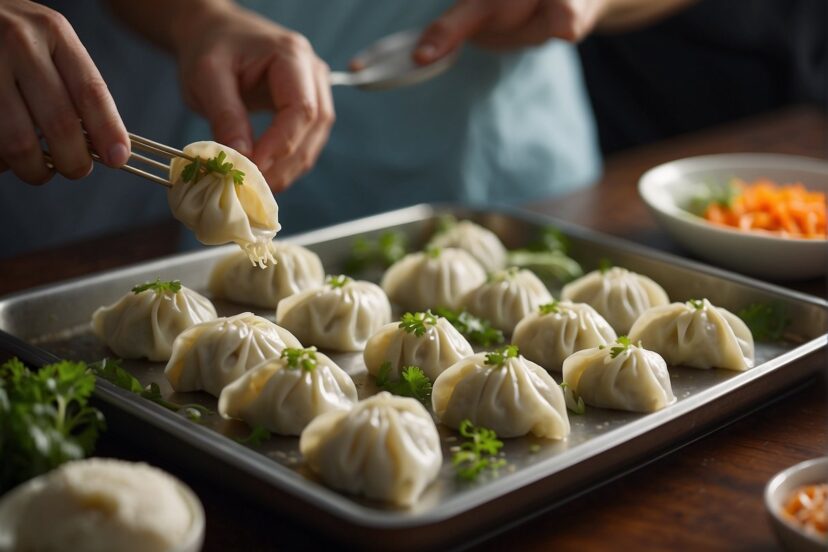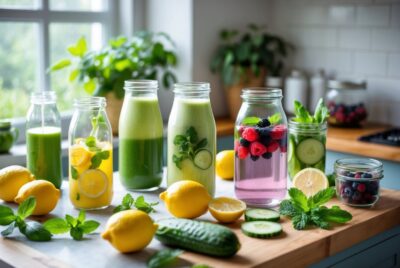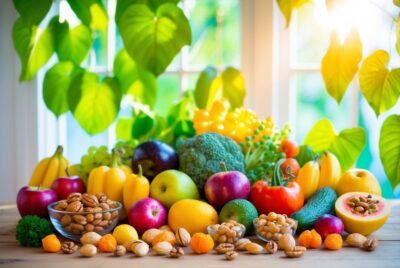Vegetarian Dumplings: Delicious Meat-Free Options
*We may earn a commission for purchases made using our links. Please see our disclosure to learn more.
Vegetarian Dumplings: A Guide to Delicious Meat-Free Options
Vegetarian dumplings are a versatile and delightful dish that is both nourishing and flavorful. As someone who appreciates the finesse of vegetarian cooking, I find the process of making dumplings from scratch to be a rewarding experience. These little parcels, typically filled with a mixture of vegetables such as cabbage, mushrooms, carrots, and chives, offer a world of taste wrapped in a delicate dough.

Crafting the perfect vegetarian dumpling involves selecting the right ingredients for the filling, ensuring they are chopped finely and seasoned well to create a savory mixture that contrasts beautifully with the soft dough exterior. Mastering the folding technique can be enjoyable; it’s like a culinary art form that requires a bit of patience but yields stunning and satisfying results.
Cooking methods for these dumplings vary and can include steaming for a tender bite or pan-frying to achieve that irresistible crispness. The final touch is the dipping sauce, which complements and enhances the flavors inside the dumpling – usually a combination of soy sauce, sesame oil, and perhaps a hint of garlic or ginger for an extra zing. This element of the meal allows for personalization, catering to both those who prefer subtler tastes and those who enjoy a bolder flavor profile.
Essential Ingredients

Creating vegetarian dumplings that are bursting with flavor and have the perfect texture starts with choosing quality ingredients. From selecting a medley of vegetables to understanding the role of proteins and dumpling wrappers, I’ll break down what goes into making these delicious morsels stand out.
Choosing the Right Vegetables
When making the filling for vegetarian dumplings, I opt for a variety of vegetables to achieve a balance of flavors and textures. Shiitake mushrooms are a staple for their meaty texture and umami depth. I usually pair them with finely diced carrots and cabbage, which add a slight sweetness and crunch. Green onions and ginger are essential for a fresh, aromatic lift, while garlic and onion provide a nice base flavor. Aim for a mixture that’s colorful and diverse to ensure each dumpling is a taste adventure.
Understanding Dumpling Wrappers
Dumpling wrappers, the delicate casing of each dumpling, can make or break the dish. I always ensure to get wrappers that are thin yet sturdy enough to hold the filling without tearing. They should have a slight elasticity for ease of folding and sealing. You can find ready-made dumpling wrappers at most Asian supermarkets, or you can make your own with a simple dough of flour and water. To test their quality, press gently with your finger; a good wrapper should indent but not break.
Proteins and Flavor Enhancers
Even though these dumplings are vegetarian, it doesn’t mean they lack protein. Tofu is my go-to protein choice, as it absorbs flavors beautifully and adds substantiality to the filling. Another option is finely minced shiitake mushrooms, which, aside from being a vegetable, have a protein content and offer a satisfying chew. For flavor enhancers, I incorporate soy sauce for saltiness and depth, and sometimes a touch of sesame oil to round out the taste. Remember, balance is key; the goal is to complement the vegetables, not overpower them.
Dumpling Preparation Techniques

I’ll guide you through creating the perfect vegetarian dumplings, focusing on the techniques to mix and season the filling, assemble the dumplings, and cook them to perfection.
Mixing and Seasoning the Filling
When I prepare the dumpling filling, I always start with a base of finely shredded vegetables. A common choice is cabbage, which I salt generously and let sit to draw out excess water—this step is crucial for a non-soggy dumpling. After squeezing out the water, I add sesame oil, soy sauce, and season with salt and pepper for flavor depth. It’s also essential to incorporate ingredients like crumbled tofu or minced mushrooms for a hearty texture. Here’s a basic seasoning mix that works well:
- 2 tablespoons of soy sauce
- 1 tablespoon of sesame oil
- 1/4 teaspoon of salt
- 1/8 teaspoon of black pepper
This mix ensures that every bite is savory and rich.
Assembling the Dumplings
For assembling dumplings, first, I ensure my working area is clean and I have all ingredients within reach. I then prepare a simple dough using all-purpose flour and water, kneading it until it’s smooth. Once it rests, I roll out small pieces into thin circles. For each wrapper, I place a spoonful of filling in the center. The key is not overstuffing to avoid breakage.
I fold the dumplings meticulously, creating pleats by pinching the edges together. There are various folding techniques, but a simple half-moon shape is easy for beginners. It’s essential to seal the dumplings well, so they don’t open up while cooking.
Cooking Methods Explained
Finally, I cook the dumplings using one of the three main methods: boiling, steaming, or pan-frying. Here’s a brief on each:
- Boiling: Brings a pot of water to a boil, drop dumplings in, and cook for about 6-8 minutes until they float and the dough turns translucent.
- Steaming: Arrange dumplings in a steamer lined with parchment paper and steam for about 10 minutes, which results in a tender chewy texture.
- Pan-frying: Start by heating oil in a skillet and placing dumplings flat-side down. Once browned, I add a small amount of water and cover to steam them, allowing the bottoms to get crisp while the tops remain tender.
Whichever method I choose, I always make sure to cook the dumplings thoroughly to ensure a delightful texture and flavor in each bite.
Cooking and Storage Tips for Vegetarian Dumplings

In this section, I’ll share essential tips for steaming and pan-frying your vegetarian dumplings to perfection, as well as effective storage solutions to maintain their freshness.
How to Properly Steam Vegetarian Dumplings
To steam dumplings, I always start by lining my steamer with cabbage leaves or parchment paper to prevent sticking. Here’s the method I use:
- Prepare the steamer: Bring water in the steamer to a full boil.
- Arrange dumplings: Place dumplings in the steamer, ensuring they do not touch each other to prevent sticking.
- Steam time: Cover and steam for about 15-20 minutes until the dough is tender and the filling is thoroughly cooked.
Note: If you use dried shiitake mushrooms in your filling, make sure they are fully rehydrated before adding them.
Pan-Frying for Crispier Texture
For a crispier texture, pan-frying is my preferred method. Here’s how I achieve that golden crust on my dumplings:
- Heat oil: In a nonstick skillet, heat a thin layer of olive oil over medium heat.
- Place dumplings: Arrange the dumplings in a single layer and cook until the bottoms start to turn golden.
- Add water: Pour a small amount of water into the pan, then immediately cover it to allow the dumplings to steam.
- Uncover and crisp: Once the water has evaporated, remove the lid and let the dumplings cook for another minute or so until the bases are well-crisped.
A sprinkle of sesame seeds adds a nice touch to the finished dumplings when serving.
Storage Solutions for Freshness
If you’ve made a large batch of dumplings, proper storage is crucial for keeping them fresh. Freezing is an excellent option:
- Freeze: Place uncooked dumplings on a tray with space between them and freeze until solid. Then, transfer them to an airtight container and keep them in the freezer.
- Airtight Container: Store cooked dumplings in an airtight container in the refrigerator. Separate layers with parchment paper or a lightly damp paper towel to maintain moisture levels.
- Reheat: Steam the previously cooked and refrigerated dumplings for 5 minutes, or pan-fry them from frozen until they are heated through and the skins become crisp again.
Using these methods, I ensure my vegetarian dumplings maintain their flavor and texture whether they’re enjoyed immediately or saved for later.
Dipping Sauces and Accompaniments

The perfect vegetarian dumpling is only enhanced by the right dipping sauce and well-chosen sides. Let me guide you through creating a simple yet intensely satisfying dipping sauce, and suggest some side dishes that elevate your dumpling experience.
Simple Yet Flavorful Dipping Sauce
To create a dipping sauce that complements your vegetarian dumplings, start with a base of soy sauce and rice vinegar. These ingredients provide a balance of umami and acidity. For a touch of sweetness, I add a whisked combination of sugar and hot water, ensuring the sugar is completely dissolved. Then, I enhance the sauce with minced garlic and ginger, staples in Asian cuisine for their aromatic qualities. To bring a depth of flavor, a drizzle of sesame oil and a sprinkle of toasted sesame seeds work wonderfully. For those who enjoy a bit of heat, a few drops of chili oil or a pinch of red pepper flakes give the sauce a spicy kick. Sometimes, I like to add a bit of black vinegar or vegetarian oyster sauce for complexity.
Side Dishes to Complement Dumplings
Pairing vegetarian dumplings with the right side dishes can turn a simple meal into a feast. I often opt for:
- Steamed Vegetables: A selection of broccoli, bok choy, or snow peas, lightly steamed, is a healthy and vibrant choice.
- Rice or Noodles: White rice or a bowl of soba noodles provide a neutral base that allows the dumplings to shine.
- Salad: A light cucumber or seaweed salad dressed with rice vinegar, sesame seeds, and a hint of sugar complements the dumplings’ flavor without overpowering.
By selecting the right accompaniments, every bite is a harmonious blend of tastes and textures that enhance the overall dining experience.
Nutrition and Dietary Considerations

When I prepare vegetarian dumplings, I pay special attention to the nutrition facts and dietary considerations to ensure they’re not just delicious but also nourishing. Each dumpling typically contains around 50 calories, with total fat at 1.2g. For those who are mindful of their fat intake, it’s worth noting that a serving contains only 0.2g of saturated fat.
Carefully choosing ingredients allows me to boost the fiber content of my dumplings. Incorporating vegetables like cabbage, carrots, and shiitake mushrooms not only adds texture and flavor but also contributes valuable fiber to the diet. Fiber is crucial for digestive health and can help maintain a feeling of fullness.
While vegetarian dumplings are a source of iron and calcium, I always recommend checking with specific recipes to ensure these nutrients meet your dietary needs. For my vegan friends, I substitute any animal-derived ingredients like eggs in the dough with flaxseed or chia seeds mixed with water which also adds to the fiber content.
Regarding gluten-free options, I often use gluten-free flour blends for the dumpling dough to cater to those with gluten sensitivities or celiac disease. It’s important, however, to ensure that all ingredients, including soy sauce, are certified gluten-free to avoid any cross-contamination.
| Nutrient | Amount Per Serving |
| Calories | 50 |
| Total Fat | 1.2g |
| Fiber | Varies |
| Iron | Varies |
| Calcium | Varies |
Being conscious of nutrition helps me make informed choices in the kitchen, keeping my vegetarian dumplings both a healthy and inclusive option for diverse diets.
Frequently Asked Questions
In my experience with vegetarian cooking, a common area of interest revolves around crafting vegetarian dumplings. Below are precise answers to some frequently asked questions about vegetarian dumplings.
1. How can I make vegetarian dumplings at home?
I start by preparing a dough from flour and water, letting it rest while I cook the fillings, which often include ingredients like tofu, shredded vegetables, and seasoning. Once the fillings are ready, I wrap them in the dough and cook the dumplings by steaming, boiling, or frying.
2. What are some creative vegetarian fillings for homemade dumplings?
I recommend exploring fillings beyond traditional options, such as sautéed shiitake mushrooms, vermicelli noodles, or a mix of seasoned tofu and vegetables. The key is to balance textures and flavors for a gratifying vegetarian filling.
3. Where can I find ready-made frozen vegetarian dumplings?
I’ve noticed that many supermarkets carry a variety of frozen vegetarian dumplings in their freezer section. Additionally, Asian grocery stores typically offer a wider range of vegetarian options.
4. How do I incorporate vegetarian dumplings into stews?
To include vegetarian dumplings in stews, I make sure to add them toward the end of the cooking process, so they maintain their texture. Dumplings can absorb the stew’s flavors and add a hearty component to the dish.
5. Are there any easy recipes for beginners to make vegetarian dumplings?
Yes, there are easy recipes tailored for beginners. Simple dough recipes and fillings that don’t require complex cooking techniques are available and make the process approachable for anyone starting out.




